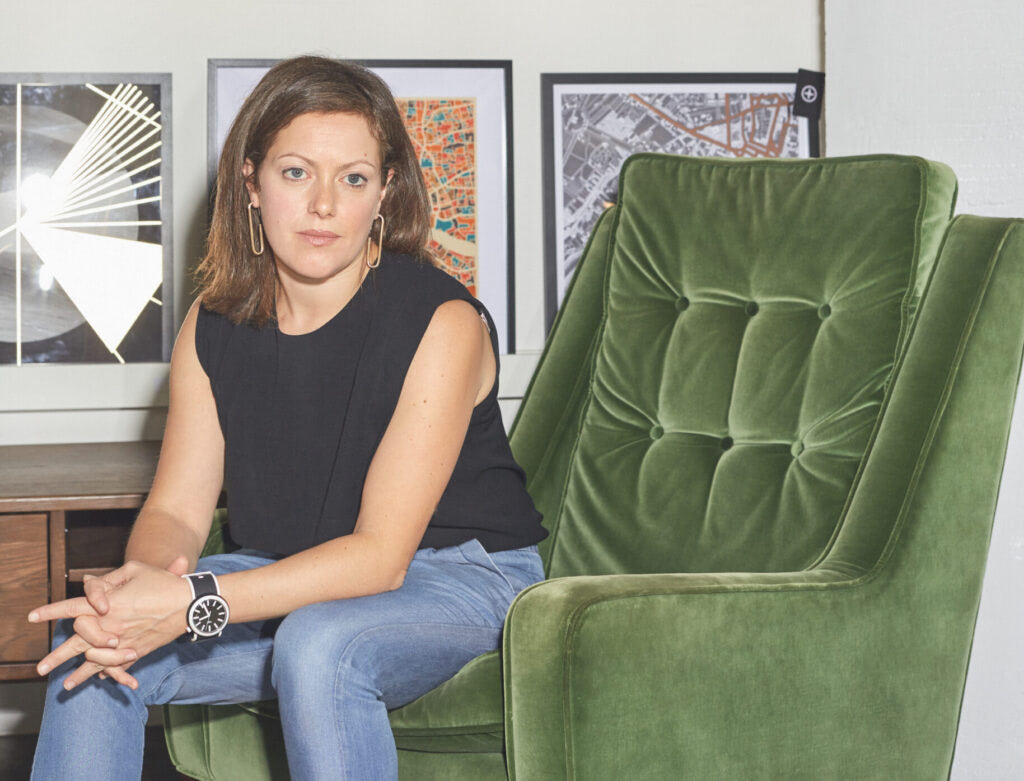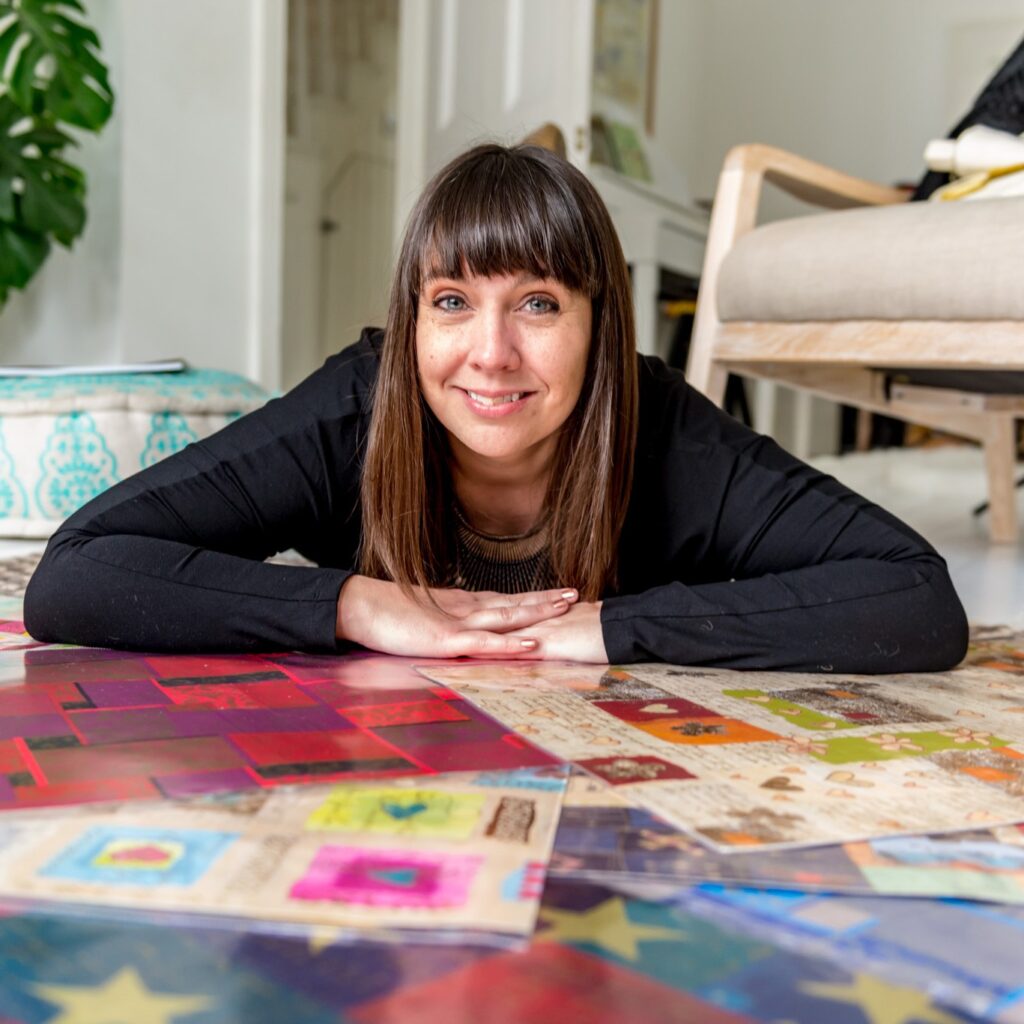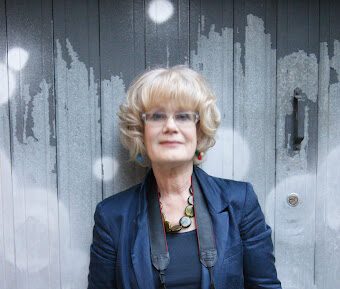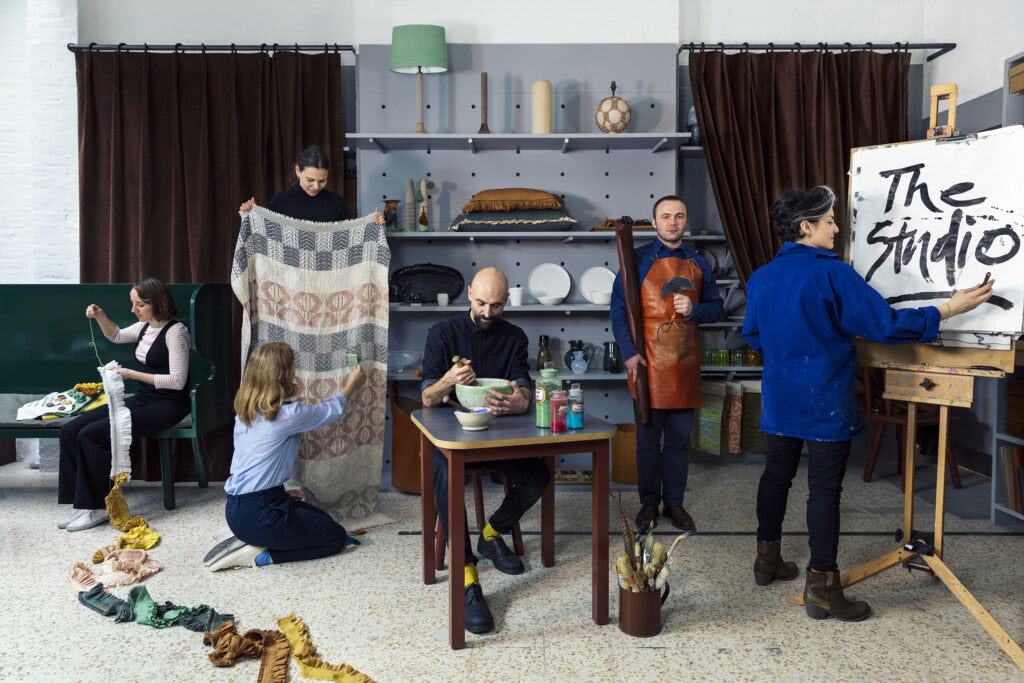Design and craft is a competitive business. Politically and economically times are tough, and sometimes it’s difficult to differentiate and build your own identity.
To stand out.
To get noticed.
To look fresh.
To be the one that people flock to.
It’s difficult, but certainly not impossible. We asked 5 amazing industry experts to share their tips on how to stand out from the crowd:
Ruth Wasserman – Design Director and Product Strategy Consultant, ex. Made.com

Ruth Wasserman is a Design Director and Product Strategy Consultant, currently helping a global client base of emerging brands to build solid product strategies and creatively inspiring collections. She was previously Design Director with Made.com, the online design and lifestyle brand bringing original design for the home at affordable prices where she was responsible for driving the vision for Made.com Product. There, her team worked with more than 100 designer collaborators at any one time to create their products. Ruth also launched Talent Lab for Made.com, the crowdfunding site for product designers..
How do you select creatives to work with?
“When working with my network of freelance creatives, I select designers whose handwriting fits well with the briefs that I am trying to fulfill, but that also have a synergy with the house style of the brand I’m working with.
It’s important if you are starting out that you be yourself creatively so that you are able to continue to be consistent in your design now and in the future. That way, you can build a roster of partners for whom you are each the best fit for one another.
I launched TalentLab for Made in 2018, and we met so many new and amazing designers that way. It was a brilliant way for new designers to get their products on Made.com. We launched 150-200 new products on the platform and the ones that were most popular with the customers were put into production. Although TL doesn’t exist anymore, there are still platforms that provide a step-up for emerging designers. These days, designers can check out platforms like Buydesign.co.uk that are there to connect designers with buyers.
What’s your advice for creatives to get noticed by people like yourself?
I always recommend that people knock three times.
“It can be easy when you are starting out to feel that people aren’t interested because they don’t get back to you straight away. Try again, and again. If you still don’t have any luck the third time then you can take it as a ‘not now’.
It can also be interesting to have non-committal meetings; ask to meet for half an hour for advice, rather than specifically if people have a job for you or want to make your designs, which is always a bit harder. It’s good to network in that way and introduce yourself to a wide number of people who may be able to help you in the future.”
Jehane Boden Spiers – Artist Agent

Jehane Boden Spiers is an artist and business manager with over 25 years experience in the creative industries. She runs an Artists’ Agency Jehane Ltd based in Brighton, and creates licenses and attracts commissions from clients worldwide. Jehane Ltd sells original artworks, increases income for its artists and provides creative coaching and portfolio reviews for artists internationally.
What’s your advice to creatives for standing out in a very competitive market?
“I have always been pro-active and worked hard.
It puts you at an advantage.
Effort is a talent in itself.
I want this phrase embroidered on a t-shirt!
Be guided by your personal intent. Take time to get to know yourself. It’s not about your strengths and weaknesses. It’s about identifying the aspects of the world which you respond to. What would you feel lost without? What makes you tick and feel inspired? Be specific. Understand this and you will have an effective decision-making tool in both your visual expression and the direction of your business. I am inspired by colour and conversations.
Apply and refer to your personal intent consistently in everything that you do. The artwork you create. The visuals you use in your marketing. The content that you write. It will give your work depth. It will have personality. It will make you stand out from the crowd.
Be consistent and aim for the highest quality in everything you do. People will notice.
Be active on all social media channels. It’s highly effective and free.”
How do you select the people you work with?
“I look for artwork with a defined personality. I respond to artists who have a strong sense of their personal intent and are comfortable expressing it. I enjoy working with people who are highly committed, stimulating, and communicate positively. I have to love an artist’s work personally. It’s as much about my eye as the work of the artists whose work I represent.
I have recently signed up an artist in New Zealand who I first met in a coaching session. I was impressed with her intelligent artwork, individual personality, and conscientious attitude. She had a mature sense of self and clearly put a lot of thought into her work. Her colour palette was very distinctive. She didn’t try to follow the crowd and described her new floral designs as a bit too “floofy” for her. It really made me warm to her and want to work with her.
Every year I run the “Anna-Maria Desogus Memorial Award” at Brighton University 3D Design & Craft (for a 2nd year and a graduating student). The only student to have won two years in a row is student Luke Fuller who recently graduated. His project “Unearthing Port Talbot” blew me away. In so many ways; effort, execution, and personal intent.
Inspired by a long line of his relatives who worked as miners, his work reflects both his local & personal history as well as our industrial heritage and the close relationship of man and environment. Luke also won two other University awards, a bursary to the RCA and was awarded the “New Designer of the Year 2018” prize at New Designers. It’s remarkable to see Luke standing-out from the crowd in a whole range of different environments. It’s meaningful and powerful stuff!”
Dan Goode – Independent Curator and Craft Ambassador

Dan Goode trained in ceramics and was chief talent scout for online designer maker marketplaces Seek & Adore and Home of Artisans. He’s a regular speaker for many organisations including the Crafts Council, The Design Trust and Arts Thread. He’s been a regular contributor for the Getting Started course run by The Worshipful Company of Goldsmiths and a session leader for the Crafts Council’s Hot House scheme.
In the last three years, Dan has become an independent curator for the four Handmade in Britain shows with ‘Curated by Dan Goode’ and works with makers one-to-one through his own enterprise ‘Making Goode’.
What advice do you have for creatives to stand out from the crowd?
“Tell your story! Customers cannot — and cannot be expected to — guess what you do, how you do it and why you do it. Your story is unique to you and it is active, ever-changing, dynamic.
By telling your story you allow others to have a relationship with your work,
to have a personal connection with it,
and that is the best way to build a customer base.
Share your story everywhere: how you became a maker, why you became a maker, why you chose your specific medium and what inspires you (both from the past and in the present). Your story is your most powerful tool!
Be consistent. In whatever you do, whether it be online, at a show or on social media, you must be consistent at all times. Be certain that wherever someone encounters you, they meet the same professional maker and can ascertain the quality of your work: whether at a show or on your website or on social media. A lack of detail anywhere — in photography, text, the quality of your stand, or your demeanour — will undermine you.
Never give anyone a moment to doubt you and what you do. As soon as you sow the seeds of doubt you will lose the customer (and me as a potential curator and ally). Always put your best foot forward!
Be patient. Building a brand takes time.
Choose good shows to exhibit at but also know that you will need to do fairs more than once to create a customer base. In year one at a show, visitors will often be encountering you for the first time and that may not translate into sales. By year two visitors will feel they know you and that’s where you’ll start to take off. Makers who ditch shows after a single year lose potential customers and must start from scratch at a new show.
Shows only last a few days so get more value out of them! If you’re doing a show in a new city, research suitable galleries and interior designers in the local area and invite them. A show is a perfect opportunity to make contacts. Call people, introduce yourself and send well-considered emails with beautiful photography and an invite to attend the show. For those who respond, offer your complimentary tickets.
Record names and email addresses of those at the show, customers and galleries, who have shown an interest in your work. Whether through a sale or a positive conversation, keep in touch with these people afterwards with regular newsletters and invite them to subsequent shows.
If you use a show wisely before, during and after the event, you can capitalise on a single event for many weeks.
Finally, I like to work with positive people! Standing for days at a show, like the Handmade in Britain fairs for which I curate, takes stamina and deep wells of charm. If you do a show, be open and receptive, talk to people and share your work. Above all do not sit at your stand looking at your phone, it is the quickest way to alienate customers and it gives the impression the maker is bored and disinterested. The makers who do best remain focused at all times, and it is these makers I am seeking.”
Barbara Chandler – Journalist

Barbara Chandler is a journalist who from the very beginning of her career – over 35 years ago – has been writing about “design” – though when she started as furnishing editor of Ideal Home magazine, it was called “furnishing and decoration.”
Barbara’s emphasis has always been on the home – covering a gamut of products from wallpapers to washing machines. She also provides advice for making a beautiful, comfortable, efficient home – so decorating and furnishing tips, colour scheming, where to shop, room planning, services and so on. There are newer issues, too – sustainability, fair trade, energy saving, recycling/reusing/repairing and so on.
For 22 years, Barbara was the design writer at Homes & Property at the Evening Standard, had a monthly column in Homes & Gardens magazine, and she sits on the selection panels for various craft and design organisations. She also recently set up Green Grads an ongoing UK initiative to platform UK graduates engaging with eco-issues, such as sustainability, climate change, circular production, waste and pollution, diminishing resources, biophilia, bio-diversity and much more.
Barbara is also a photographer – check out her designer portraits on Instagram.
What advice would you give creatives to stand out from the crowd?
“Work on your pictures. When you send in pictures LABEL YOUR FILES CLEARLY. Your images are going to a journalist who already has a huge download file – and then on to a picture editor with an even bigger store.
Get to know the various types of media that could be interested in you and your work. Try and make personal contacts and keep a careful record of who you meet, and how to be in touch with them. Remember a mention in one publication/programme or so on can lead to more publicity elsewhere. I recently wrote about some “rock and roll” wallpaper featuring album sleeves. That ended up on a radio show who talked about the designs – and played the music.
If exhibiting, try and be on your stand as much as you can. Keep an “outwards” attitude – stay off your phone if possible. Offer information. Have some printed information/images to give to any interested journalist -yes, you can provide images on USB sticks (but they are very easily lost!) but it really helps a journalist to have something to look through then and there, and then to have handy later.
Keep a journalist chatting if you can; ask them what they are interested in and tell them about yourself and your work. A postcard works better than a business card, I’ve found. Make contact with the press officer for the show in advance – make sure they know you have good pics and info as journalists may be writing previews.
Make sure your website is up-to-date. It could be your route to a journalist looking for info, say, late at night or at the weekend. Make sure your contact info is good and clear – phone numbers really do help.
Believe in yourself. Journalists need you as much as you need them. They have pages to fill. So what is it about you and your business that is different, relevant, newsy, or even fun? Think it through – and then TELL US.“
Kathy Shenoy – Product & Maker Development Manager for The New Craftsmen

The New Craftsmen represents and sells the work of British-based craft makers, principally specialising in pieces for interiors and collectible craft. They have a showroom in Mayfair, sell work internationally, and have a thriving services arm working on made-to-order and bespoke commissions. Their clients are tastemakers from the worlds of fashion film, music and design, interior designers, architects, property developers, and craft collectors and enthusiasts.
What’s your advice for creatives to stand out from the crowd?
“Work on developing your own aesthetic signature. It doesn’t have to be loud or brash, but you do need to focus and hone a style that can be identifiably yours to help build awareness of your work.
Pay attention to detail. It’s not just your work that will make people want to work with you and buy from you – but your attention to detail in everything associated with you.
Be responsive to enquiries,
be charming and polite,
make sure every way in which you present your work is considered and top quality
(including your website, Instagram account, and show stands)
Ask for, and listen to, feedback from everyone you can whom you respect. People who like you, and like your work, will be candid about ways that you can improve – never stop asking!”
How do you select creatives to show and sell?
“We select people on the basis of the following things:
- Quality of work – is it well made, is it distinctive, does it make our hearts sing?
- Character & Personality – we want to work with people that we can get on with and build a strong and enduring relationship. Chemistry matters!
- Personal ambition – we are ambitious for our business and our makers and want to work with people who are the same.
- Does it sit with our existing portfolio and aesthetic – sometimes we can love something but can’t quite see where and how it might fit right now.”
How do you find and select new makers?
“We use a variety of methods to try and find new makers; from trawling the fairs and shows on the hunt for new talent, through to searching Instagram and the internet for inspiration.
Our most fruitful method is often the recommendations of makers that we already work with though – we always ask them for ideas and suggestions as they have a good understanding of what we are looking for.”
What’s the number one tip that resonated with you from these six experts about how to stand out from the crowd? What are you going to do to change the way you present yourself? We would love to hear from you in the comments section below.
Thank you Patricia for brightening the afternoon with so many illuminating rays of sunshine! I shall take them all on board as I prepare to show and sell in The Christmas Market at Middleport Pottery (30th Nov/1st Dec), particularly keeping in mind Dan Goode’s tips on how to maximise the reach of each event you do. Do join me there! @MFitzoliver on Twitter for some tasters of my world and work.
This is a fantastic article – thank you! I shall be sharing this with all my textiles students at Carmarthen School of Art.
Oh that’s great to hear Laura, thanks for sharing!
Excellent set of advice. I’m going to mull over their tips and read it again soon.Thank you!